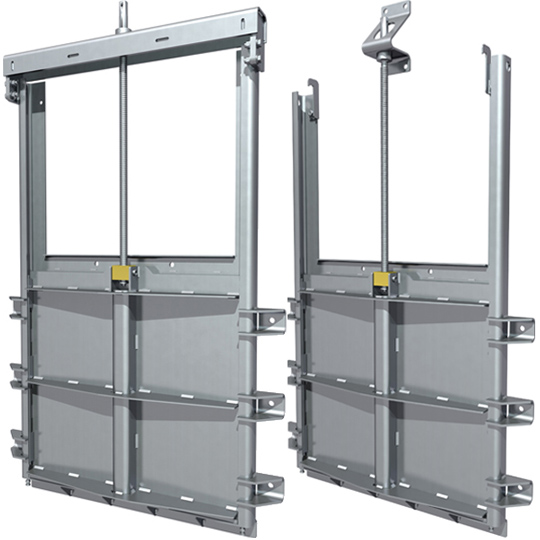Why does the actuator of wastewater valves matter for the installation of the valve?

When wastewater valves (knife-gate valves or penstocks) are installed in plants, the actuator (handwheel, electric actuator etc.) is usually not mounted directly to the valve but arranged above the valve and perpendicular to it.
This is the most commonly used arrangement: The actuator is mounted to a headstock and the actuating force is transmitted to the valve by rotary motion. A stem- stem nut connection transforms the rotary motion into a lifting motion directly on the valve. The axial forces generated in the process are compensated by the bearing on the “non-rising stem” via sliding disks.
The technical disadvantage of this arrangement is heavy wear due to the single slide bearing. Also, the functional components are difficult to access and operating efficiency is not optimal.
A much better type of installation from a technical point of view: This is a version with a “rising stem”, which means that the rotary motion is transformed into a lifting motion directly in the actuator. The axial forces generated in the process are transmitted to a fixed headstock.To prevent it from buckling, the inner connecting rod can run on several radial bearings depending on the overall height. The advantages of this arrangement are e.g. that the relatively moving parts can be easily accessed for maintenance purposes and that the unit is highly efficient. Additionally, this type is a self-supporting unit which is factory assembled, adjusted and tested and can thus be installed directly on site.
By selecting the right actuation system for wastewater valves, the actuator’s efficiency can be improved, its useful life can be significantly increased and maintenance friendliness can be greatly enhanced.